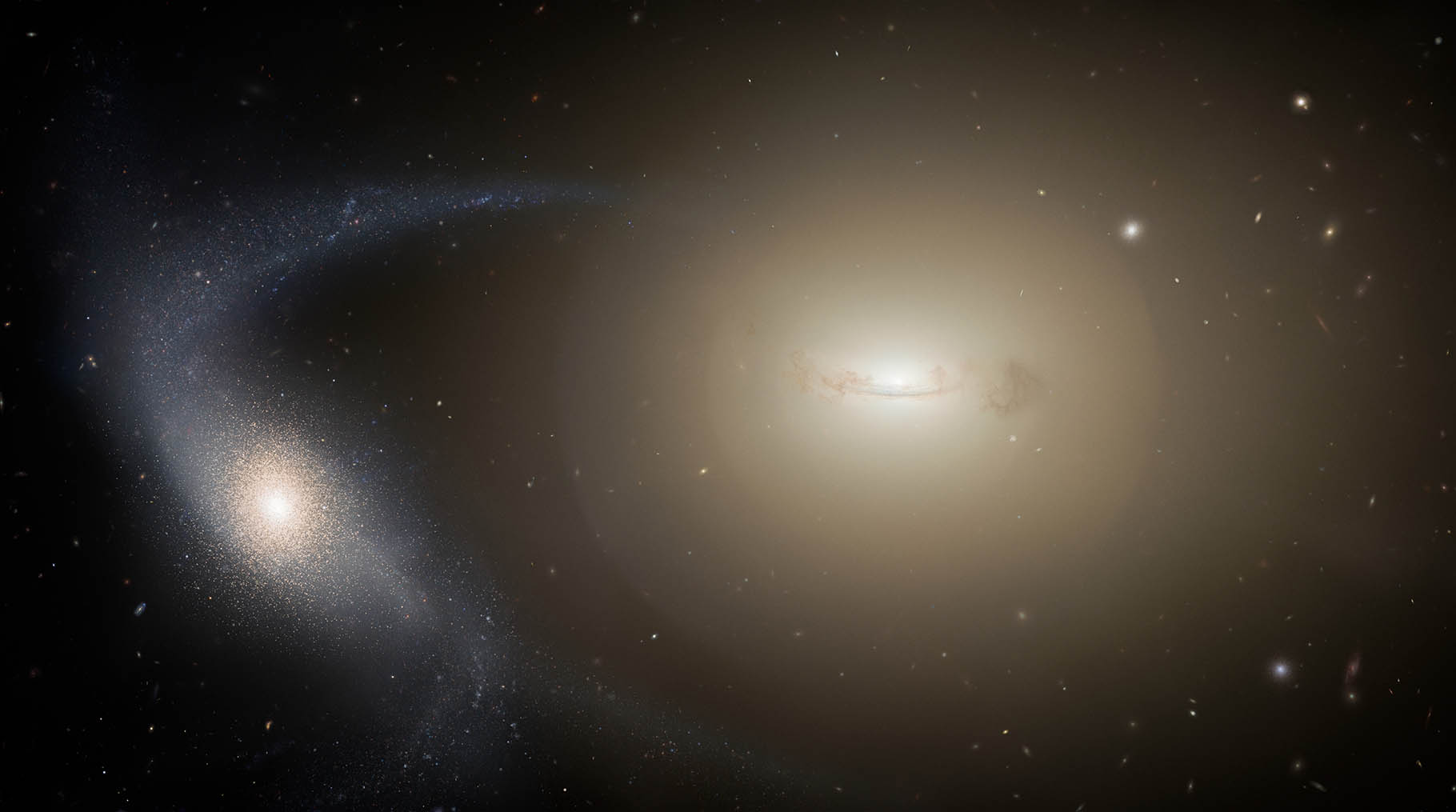Gemini North Reveals the Formation of Dense Dwarf Galaxy ‘Fossils’

Astronomers using the Gemini North telescope, one half of the International Gemini Observatory operated by NSF’s NOIRLab, have captured the eroding remains of more than 100 dwarf galaxies as they transition into ultra-compact dwarf galaxies, objects with masses much greater than star clusters yet much smaller than dwarf galaxies. These findings confirm that many ultra-compact dwarf galaxies are likely the fossil remains of normal dwarf galaxies that have been stripped of their outer layers.
Ultra-compact dwarf galaxies (UCDs) are among the densest stellar groupings in the Universe. Being more compact than other galaxies with similar mass, but larger than star clusters — the objects they most closely resemble — these mystifying objects have defied classification. The missing piece to this puzzle has been a lack of sufficient transitional, or intermediate objects to study. A new galaxy survey, however, fills in these missing pieces to show that many of these enigmatic objects are likely formed from the destruction of dwarf galaxies.
The idea that UCDs are remnants of disrupted dwarf galaxies has been proposed since they were discovered over two decades ago. However, previous searches have not revealed the large population of galaxies-in-transition that you would expect to find. So an international team of astronomers conducted a systematic search for these intermediate-stage objects around the Virgo Cluster, a grouping of thousands of galaxies in the direction of the constellation Virgo. Using the Gemini North telescope near the summit of Maunakea in Hawaiʻi, the team identified more than 100 of these missing-link galaxies that show every stage of the transformation process.
“Our results provide the most complete picture of the origin of this mysterious class of galaxy that was discovered nearly 25 years ago,” said NOIRLab astronomer Eric Peng, a co-author on the paper describing these results appearing in the journal Nature. “Here we show that 106 small galaxies in the Virgo cluster have sizes between normal dwarf galaxies and UCDs, revealing a continuum that fills the ‘size gap’ between star clusters and galaxies.”
The team compiled their sample by first looking at images from the Next Generation Virgo Cluster Survey, taken with the Canada-France-Hawaiʻi Telescope. And though they were able to identify hundreds of candidate UCD progenitors, they were unable to confirm their true nature. The obstacle was that UCDs that are surrounded by envelopes of stars are indistinguishable from normal galaxies that are located farther away beyond the Virgo Cluster.
To distinguish the candidate UCD progenitors from the background galaxies, the team performed follow-up spectroscopic studies with Gemini North to obtain more concrete measurements of their distances. These observations allowed the astronomers to eliminate all of the background galaxies from their samples until only the UCDs within the Virgo Cluster remained.
